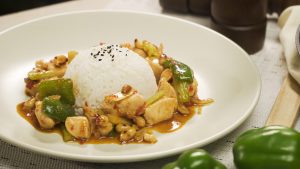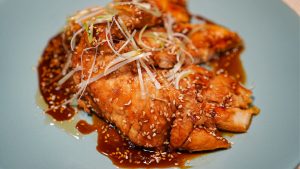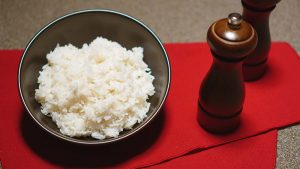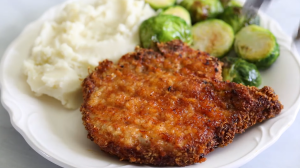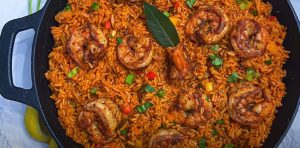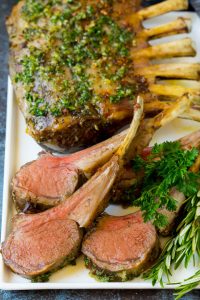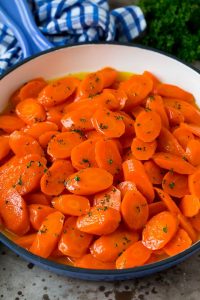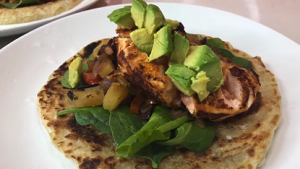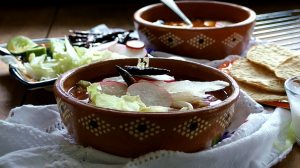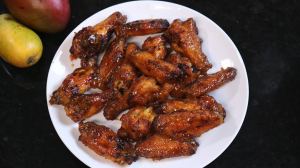Craving for Panda Express Chow Mein? This recipe is about to bring the deliciousness and authenticity right to your kitchen. It’s simple, easy to follow, and the result is a dish loaded with flavors that will transport you straight to the heart of Asian cuisine.
The ingredients are simple and most of them can easily be found in your pantry. The key ingredient that you might not have is the Yakisoba noodles, which are the base of this dish. These are Japanese style noodles and can be bought from any Asian grocery store. Oyster sauce, another important ingredient, adds that unique depth of flavor and can also be found in the Asian aisle of most supermarkets.
Ingredients for Panda Express Chow Mein
Dry yakisoba noodles: These are Japanese style noodles and form the base of the Chow Mein.
Oil: Used for stir frying the vegetables and noodles. It adds a rich texture to the dish.
Yellow onion: Adds a sweet and tangy flavor to the dish.
Cabbage: Adds a crunchy texture and is a great source of vital nutrients.
Celery: Adds a fresh, crisp flavor and texture.
Soy Sauce: Gives the dish its umami, salty flavor.
Oyster Sauce: Provides a deep, savory flavor that's essential in many Asian dishes.
One reader, Arlette Justice says:





I recently tried the Panda Express chow mein recipe and it was a hit! The flavors were spot on and the noodles were perfectly cooked. It's a great way to enjoy restaurant-quality chow mein at home. I highly recommend giving it a try!
Mastering the Techniques for Authentic Chow Mein
How to slice the onions and cabbage thinly: Use a sharp knife to slice the onions and cabbage into thin, uniform pieces. This will ensure even cooking and distribution of flavors in the chow mein.
How to cut the celery on a bias thinly: Cut the celery at a 45-degree angle to create elongated, diagonal slices. This technique not only enhances the visual appeal of the dish but also allows for a more even distribution of the celery throughout the chow mein.
How to caramelize the vegetables: Cook the vegetables over high heat, stirring occasionally, until they develop a golden-brown color and a slightly sweet flavor. This process enhances the natural sweetness of the vegetables and adds depth to the overall dish.
How to toss the noodles and vegetables together: Gently combine the cooked noodles and caramelized vegetables, ensuring that the ingredients are evenly distributed. This step helps to incorporate the flavors and textures of the noodles and vegetables, resulting in a well-balanced chow mein.
How to add the soy sauce and oyster sauce: Drizzle the soy sauce and oyster sauce over the noodles and vegetables, then toss them together to evenly coat the ingredients. This step infuses the dish with savory and umami flavors, enhancing the overall taste of the chow mein.
How To Make Panda Express Chow Mein
Make the perfect Panda Express chow mein copycat with the help of this recipe. It’s easy to follow, quick to make, and it allows you to go easy on the oil.
Serves:
Ingredients
- 2pkgdry Yakisoba noodles,cooked without spice packets and drained
- 3tbspoil
- ½yellowonion,sliced
- 8ozcabbage,sliced
- 2ozcelery,cut into small pieces
- 1½tbspsoy sauce
- 1tbspoyster sauce
Instructions
-
Sliced the onions and cabbage thinly.
-
Cut the celery on a bias thinly as well.
-
Put the oil in the pan, set to high and when the oil is hot add the veggies.
-
Let cook for a couple of minutes until it is caramelized a bit.
-
Stir and let more of it caramelize.
-
Add the noodles and toss together.
-
Add the soy sauce and oyster sauce and toss together.
-
Serve and enjoy!
Nutrition
- Calories: 515.86kcal
- Fat: 12.13g
- Saturated Fat: 1.88g
- Trans Fat: 0.10g
- Monounsaturated Fat: 5.86g
- Polyunsaturated Fat: 3.51g
- Carbohydrates: 84.74g
- Fiber: 5.05g
- Sugar: 3.92g
- Protein: 17.08g
- Cholesterol: 95.20mg
- Sodium: 340.29mg
- Calcium: 63.24mg
- Potassium: 399.59mg
- Iron: 4.83mg
- Vitamin A: 23.24µg
- Vitamin C: 14.90mg
Expert Tip for Perfecting Your Chow Mein Technique
When preparing your yakisoba noodles, it's important to not overcook them. They should be cooked al dente, or to the point where they still have a bit of a bite. This will ensure that they don't become too soft and mushy when you add them to the pan with the vegetables and sauces. Additionally, when caramelizing your vegetables, be patient and let them cook on their own. Stirring too often can prevent them from getting that delicious caramelized flavor. Remember, good cooking often requires patience.
Time-Saving Tips for Making Panda Express Chow Mein Recipe
Prep ahead: Chop and prepare all the vegetables and ingredients in advance to streamline the cooking process.
One-pot wonders: Opt for recipes that allow you to cook everything in a single pot or pan to minimize cleanup time.
Batch cooking: Make larger portions and freeze the extra for future quick and easy meals.
Organized workspace: Keep your kitchen organized and clean as you cook to save time searching for utensils and ingredients.
Efficient tools: Use kitchen tools like food processors and mandolines to speed up the prep work.
Substitute Ingredients For Panda Express Chow Mein Recipe
dry yakisoba noodles - Substitute with spaghetti noodles: Spaghetti noodles can be used as a substitute for yakisoba noodles as they have a similar texture and can absorb the flavors of the dish.
oil - Substitute with sesame oil: Sesame oil can add a nutty flavor to the dish, similar to the oil used in the original recipe.
yellow onion - Substitute with white onion: White onions can be used as a substitute for yellow onions as they have a similar flavor profile and can caramelize well when cooked.
cabbage - Substitute with bok choy: Bok choy can be used as a substitute for cabbage as it provides a similar crunchy texture and mild flavor.
celery - Substitute with jicama: Jicama can be used as a substitute for celery as it offers a similar crunchy texture and a slightly sweet flavor.
soy sauce - Substitute with tamari: Tamari can be used as a substitute for soy sauce as it has a similar rich, savory flavor and is gluten-free.
oyster sauce - Substitute with hoisin sauce: Hoisin sauce can be used as a substitute for oyster sauce as it provides a sweet and savory flavor, similar to oyster sauce.
Presenting Your Homemade Chow Mein Dish
Elevate the plating: When presenting the chow mein dish, focus on creating a visually appealing plate. Use a combination of vibrant vegetables and carefully placed noodles to create an eye-catching presentation.
Incorporate texture: Add a crispy element to the dish, such as a delicate crispy noodle nest, to provide a textural contrast to the soft noodles and vegetables.
Balance the flavors: Ensure that the dish has a harmonious balance of flavors by incorporating a hint of sweetness from caramelized onions and a touch of umami from the soy and oyster sauces.
Garnish with finesse: Finish the dish with a sprinkle of thinly sliced green onions or a delicate chiffonade of cilantro to add a pop of color and a fresh, aromatic note.
Attention to detail: Pay attention to the placement of each component on the plate, ensuring that the dish is presented with precision and care.
Use high-quality ingredients: Opt for the freshest produce and the best quality noodles to elevate the overall taste and presentation of the chow mein dish.
Create a focal point: Consider creating a focal point on the plate, such as a carefully arranged nest of noodles, to draw the eye and showcase the beauty of the dish.
Embrace simplicity: While presenting the dish, embrace the beauty of simplicity by allowing the natural colors and textures of the ingredients to shine through.
Essential Kitchen Tools for Making Chow Mein
- Pan: A flat-bottomed cooking utensil used for frying, searing, and sautéing ingredients.
- Knife: A sharp-edged utensil used for cutting and preparing ingredients.
- Cutting board: A durable board used for cutting and preparing ingredients.
- Tongs: A utensil with two arms and a pivot used for gripping and lifting items.
- Spatula: A flat, broad utensil with a long handle, used for lifting and flipping ingredients.
- Wok: A versatile round-bottomed cooking vessel used for stir-frying, steaming, and deep-frying.
Storing and Freezing Homemade Chow Mein
- Allow the chow mein to cool completely before storing to prevent the noodles from becoming soggy.
- Transfer the cooled chow mein to an airtight container or resealable plastic bag.
- If using a container, press a piece of plastic wrap directly onto the surface of the noodles to prevent them from drying out.
- Refrigerate the chow mein for up to 3-4 days.
- To freeze, portion the chow mein into individual serving sizes and place them in freezer-safe containers or resealable plastic bags.
- Remove as much air as possible from the bags before sealing to prevent freezer burn.
- Label the containers or bags with the date and contents for easy reference.
- Freeze the chow mein for up to 2-3 months.
- To reheat, thaw the frozen chow mein in the refrigerator overnight.
- Reheat the thawed or refrigerated chow mein in a skillet or wok over medium heat, stirring frequently until heated through.
- If the noodles seem dry, add a splash of water or chicken broth to help rehydrate them while reheating.
- Alternatively, you can reheat the chow mein in the microwave, stirring every 30 seconds to ensure even heating.
- Enjoy the reheated Panda Express chow mein as a quick and tasty meal.
How To Reheat Leftover Chow Mein
Reheat the chow mein in a skillet or wok over medium-high heat. Add a small amount of oil or water to prevent the noodles from sticking and to help them regain their moisture. Stir-fry for 3-5 minutes, or until the noodles are heated through and slightly crispy.
Microwave the leftover chow mein in a microwave-safe dish. Cover the dish with a damp paper towel to prevent the noodles from drying out. Microwave on high for 1-2 minutes, stirring halfway through, or until the noodles are heated through.
If you have a steamer, you can reheat the chow mein by placing it in a heat-safe dish and steaming it for 3-5 minutes, or until heated through. This method helps to retain the moisture in the noodles and vegetables.
For a crispy texture, preheat your oven to 350°F (175°C). Spread the leftover chow mein on a baking sheet lined with parchment paper. Bake for 10-15 minutes, or until the noodles are heated through and slightly crispy on the edges.
If you have an air fryer, you can reheat the chow mein by placing it in the basket and cooking at 350°F (175°C) for 3-5 minutes, shaking the basket halfway through. This method will give you a crispy texture without the need for additional oil.
Interesting Trivia About Chow Mein
Panda Express Chow Mein is a popular Chinese-American dish that was created in the United States. Despite its name, it is not an authentic Chinese dish but rather a fusion of Chinese and American flavors.
Is Making Chow Mein at Home Cost-Effective?
The panda express chow mein recipe is quite cost-effective for a household. The ingredients, such as yakisoba noodles, vegetables, and soy sauce, are affordable and easily accessible. The dish offers a satisfying portion for a family of four at an approximate cost of $15. The overall verdict rating for this recipe is 8/10, considering its simplicity, flavor, and affordability.
Is Panda Express Chow Mein Healthy or Unhealthy?
The Panda Express chow mein recipe, while delicious, is not particularly healthy. Here's why:
- The recipe relies heavily on oil for cooking, which adds unnecessary calories and fat to the dish.
- Soy sauce and oyster sauce, although flavorful, are high in sodium, which can lead to high blood pressure and other health issues if consumed in excess.
- The recipe lacks a significant source of protein, which is essential for a balanced meal.
- While the dish does include some vegetables, such as cabbage and celery, the portion size is relatively small compared to the amount of noodles.
To make this recipe healthier, consider the following suggestions:
- Reduce the amount of oil used in cooking, or opt for a healthier alternative like olive oil or coconut oil.
- Use low-sodium soy sauce and oyster sauce to decrease the overall sodium content of the dish.
- Incorporate a lean protein source, such as grilled chicken, shrimp, or tofu, to make the meal more balanced and satisfying.
- Increase the portion of vegetables in the recipe. Add more cabbage, celery, and other nutrient-dense vegetables like carrots, bell peppers, or bok choy to boost the fiber and vitamin content of the dish.
- Use whole grain or vegetable-based noodles instead of traditional yakisoba noodles to increase the fiber content and overall nutritional value.
- Experiment with additional herbs and spices, such as ginger, garlic, or red pepper flakes, to add flavor without relying on high-sodium sauces.
Our Editor's Take on This Chow Mein Recipe
This Panda Express chow mein recipe is a simple and delicious take on the classic dish. The combination of yakisoba noodles, fresh vegetables, and savory sauces creates a flavorful and satisfying meal. The cooking method allows for the veggies to caramelize, adding depth of flavor to the dish. It's a quick and easy recipe that captures the essence of Panda Express chow mein, making it perfect for a homemade takeout night.
Enhance Your Panda Express Chow Mein Recipe with These Unique Side Dishes:
Delicious Alternatives to Panda Express Chow Mein
Perfect Appetizers and Desserts for a Chow Mein Feast
Why trust this Panda Express Chow Mein Recipe:
This recipe for Panda Express chow mein is a trusted and authentic rendition of the popular dish. The use of yakisoba noodles adds a genuine touch, while the combination of soy sauce and oyster sauce brings out rich and savory flavors. The careful caramelization of onions, cabbage, and celery adds depth to the dish, ensuring a delightful texture and taste. With these high-quality ingredients and precise cooking techniques, this recipe guarantees a delicious and satisfying experience, making it a trustworthy choice for anyone craving a taste of Asian cuisine.
Was this page helpful?
Have your own special recipe to share? Submit Your Recipe Today!



